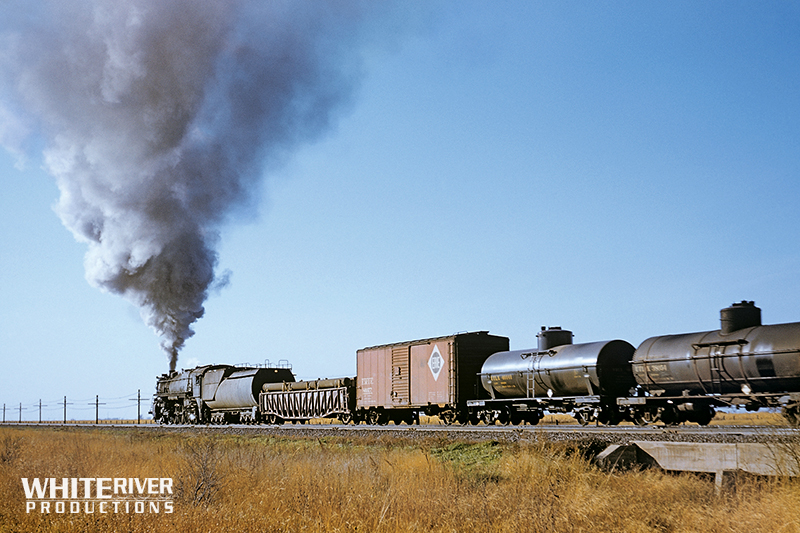 Financier James J. Hill became known as the “Empire Builder” for expanding the Great Northern into a transcontinental mainline connecting the Great Lakes with Seattle and British Columbia. Hill’s investors would never have to contend with another financial failure. Hill’s railroad construction enterprise expanded beyond Minnesota to connect the Duluth-Superior Lakehead to the west coast at Everett, Washington, followed by a north-south link connecting Vancouver, British Columbia, with Seattle, Portland, and California. His business plan of using branch lines and feeder systems routing traffic to his Great Northern Railway from the Great Lakes, Canada, Europe, and Asia would serve his transportation enterprise well. During economic downturns, the Hill interests acquired the Northern Pacific Railway and the Chicago, Burlington & Quincy. In March 1970 all these corporate entities, along with the Spokane, Portland & Seattle Railway, were finally merged into the Burlington Northern Railroad.
Financier James J. Hill became known as the “Empire Builder” for expanding the Great Northern into a transcontinental mainline connecting the Great Lakes with Seattle and British Columbia. Hill’s investors would never have to contend with another financial failure. Hill’s railroad construction enterprise expanded beyond Minnesota to connect the Duluth-Superior Lakehead to the west coast at Everett, Washington, followed by a north-south link connecting Vancouver, British Columbia, with Seattle, Portland, and California. His business plan of using branch lines and feeder systems routing traffic to his Great Northern Railway from the Great Lakes, Canada, Europe, and Asia would serve his transportation enterprise well. During economic downturns, the Hill interests acquired the Northern Pacific Railway and the Chicago, Burlington & Quincy. In March 1970 all these corporate entities, along with the Spokane, Portland & Seattle Railway, were finally merged into the Burlington Northern Railroad.
During the steam era, Great Northern operated big articulateds that moved iron ore from the Mesabi Iron Range to the Twin Ports and their famous Class O-8 Mikados could be found hustling fast freights across the Dakotas and Montana. The Great Northern also operated a 72-mile-long electrified district through Washington state’s Cascade Mountains. With the arrival of the diesel era, the Great Northern owned and experimented with locomotives from nearly every builder. Taking the lead in the race for horsepower in the 1960s, GN ushered in the era of the SD45 with the purchase of number 400. Later named “Hustle Muscle,” the historic locomotive was the first of its kind off the EMD assembly line. “Rocky,” GN’s trademarked mountain goat, was used to identify the Great Northern with Glacier National Park, Montana’s vacation paradise. A pair of famous streamlined passenger trains named the Empire Builder and Western Star served Hill’s grandiose hotels located in the park.
All of this and more is presented here in 256 pages, illustrated by the work of many of the best color photographers of the steam-to-diesel transition era. Enjoy this preview from The Great Northern by Richard Yaremko.

No doubt this is what photographer Bruce Black was really after during his 1956 visit to the Dakota Division. On October 10, he catches late afternoon sun hitting the flanks of Class S-1 Northern 2552, one mile west of Grand Forks. These were the waning weeks of mainline steam operation and it was only the autumn rush of apples, grain, and potatoes that brought these locomotives out of storage. The last run for steam on the Dakota Division was made between Fargo and Grand Forks, N.D., on December 20, 1956, by Class O-4 Mikado no. 3212. Bruce Black photo

Train length and tonnage increases led Great Northern to return to General Electric for two more electric locomotives, delivered in 1947. These monsters became the railway’s largest locomotives, rated at 5,000 horsepower each. Now on August 4, 1956, nine year old W-1s 5018 and 5019 await their disposition at Wenatchee, Wash., four days after the electrified district became history. Locomotive 5018 was sold to Union Pacific, becoming unrecognizable as their coal fired turbine 80 while sister 5019 was scrapped at Seattle in 1959. Bert Mills photo, Trevor Mills collection

GN was the sole purchaser of EMD’s NW3 model, the beginnings of an attempt to design the ultimate road-switching diesel locomotive. Seven were built between 1939 and 1942 with four being traded in on GN’s 1965 GP35 order. By the fall of 1967 only the 180 remained on the roster, pictured here returning to Spokane, Wash., with the Coeur d’Alene Local. Jerry Quinn photo, Richard Yaremko collection

A trio of General Electric U33Cs lead hotshot No. 97 west of Pacific Junction, Mont., on August 14, 1968. Delivered during the spring of 1968, 2534 was built using the phase 1 body style with tapered radiator housing. This order of U33Cs were the first new units to receive Great Northern’s “Big Sky Blue” paint, introduced in March 1967. Ronald C. Hill photo

Trains 357/358 met daily at Bow, Wash. On April 11, 1969, when passenger Steve Patterson made his trip, the death knell was already sounding for the morning Internationals. Their last day of operation turned out to be on October 27, 1969. In less than twenty years traffic had dwindled from three trains a day each way to one train each way as the Burlington Northern merger approached. Steve Patterson photo

On September 3, 1967, east of Enfield, Minn., GP9 638 and NW2 161 lead train No. 501, the Osseo Line Local, from St. Cloud to Lyndale Junction over the Third Subdivision. The NW2 is only along for a ride as this locomotive class was not equipped for multiple unit operation. Its destination is the diesel shop at Dale Street in St. Paul, where some scheduled maintenance will be preformed. Norm Priebe photo



